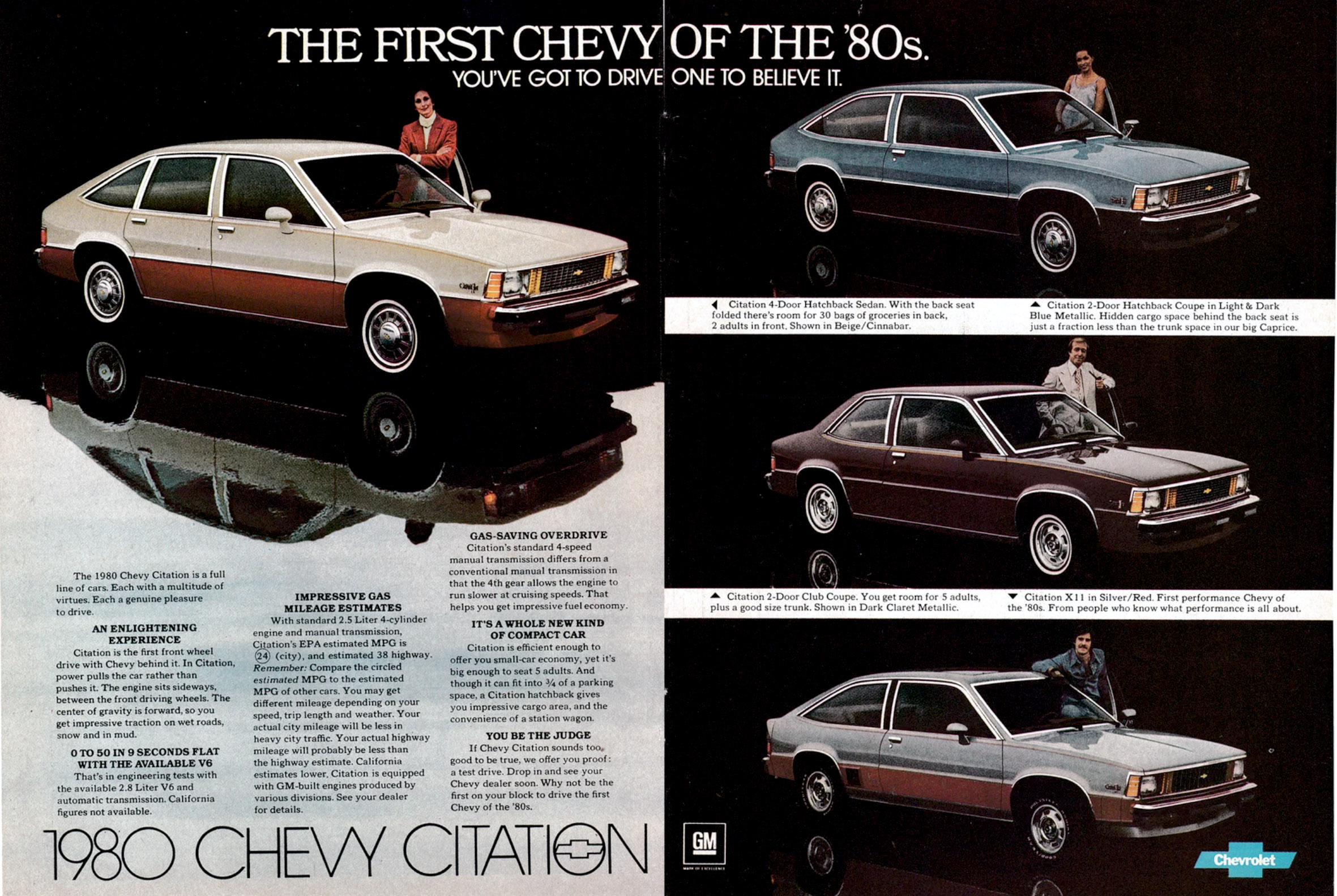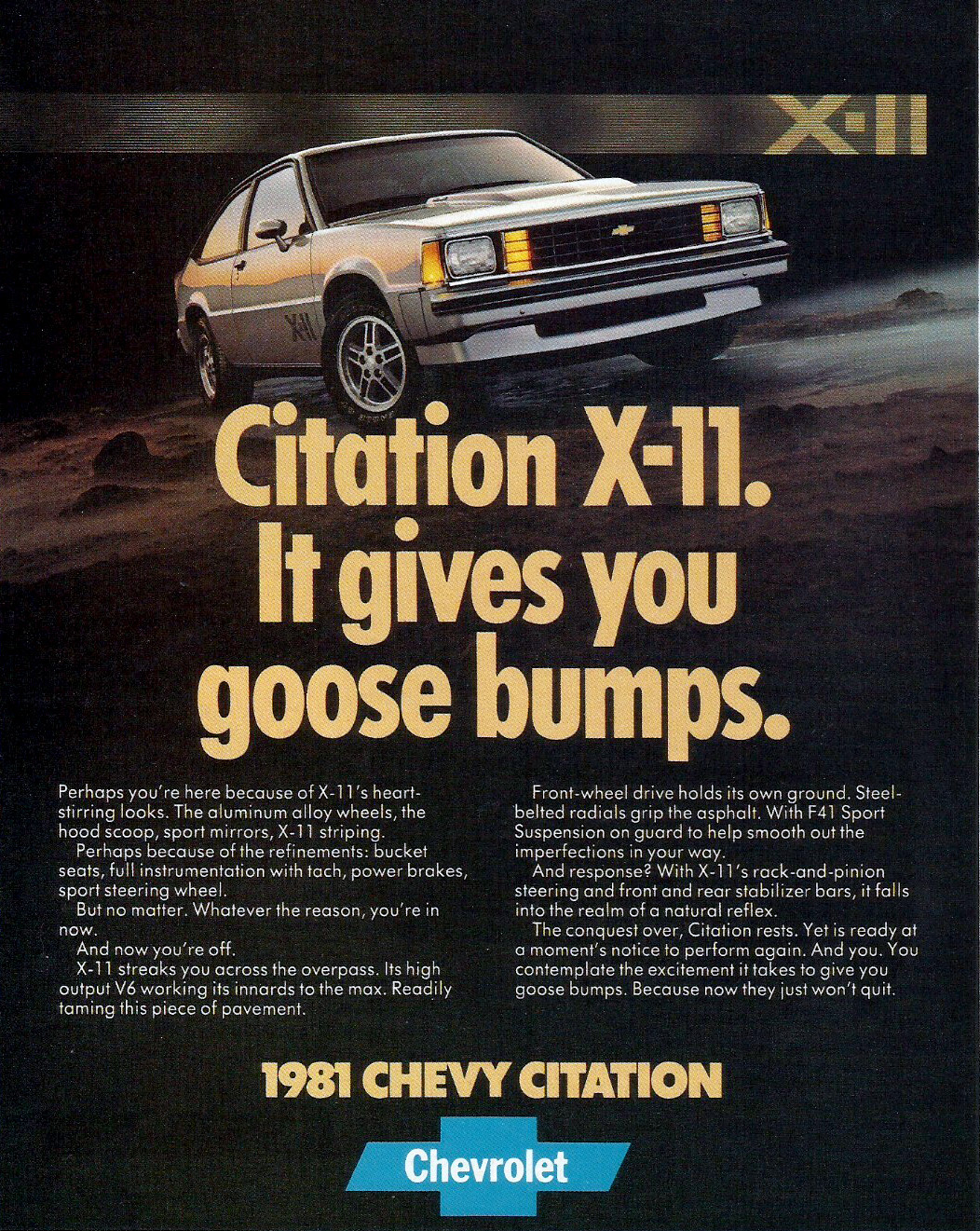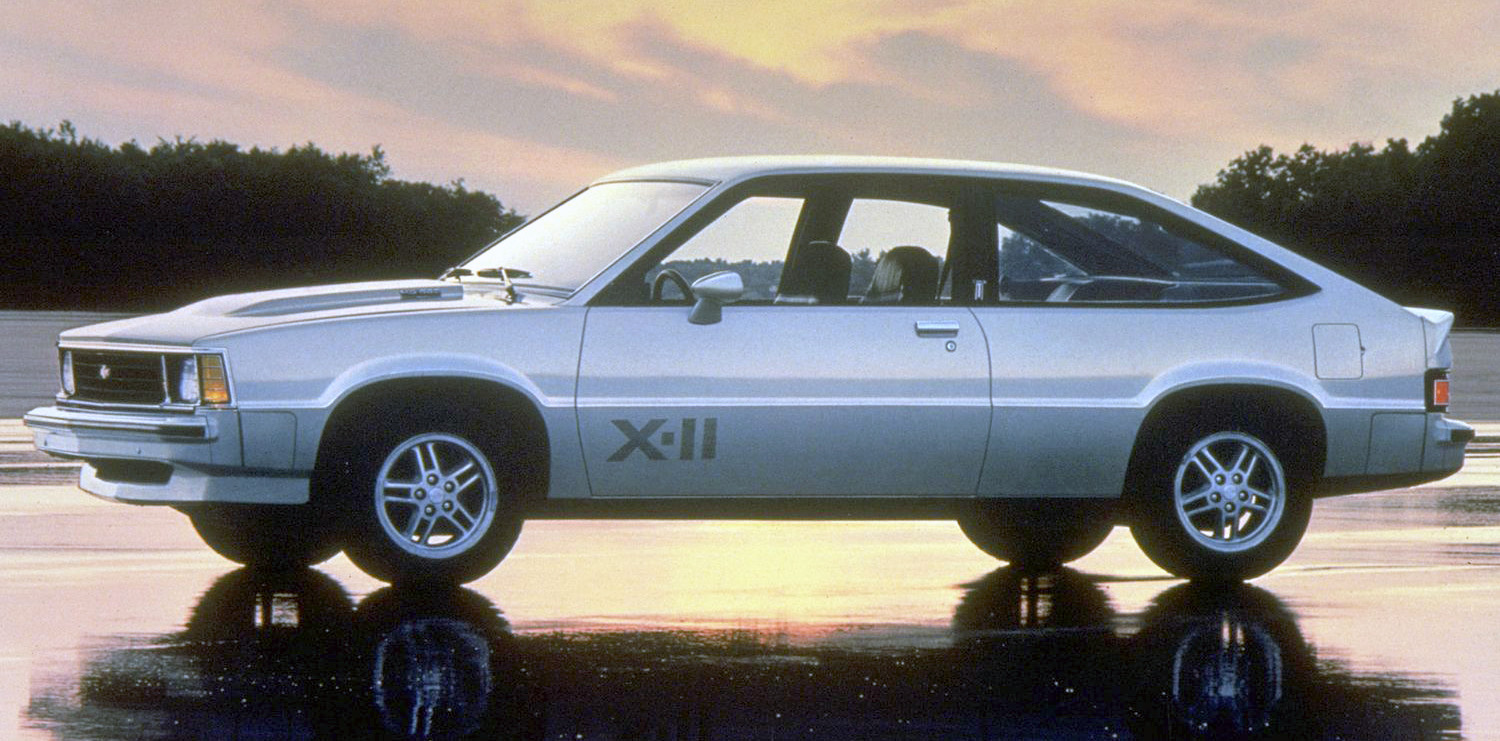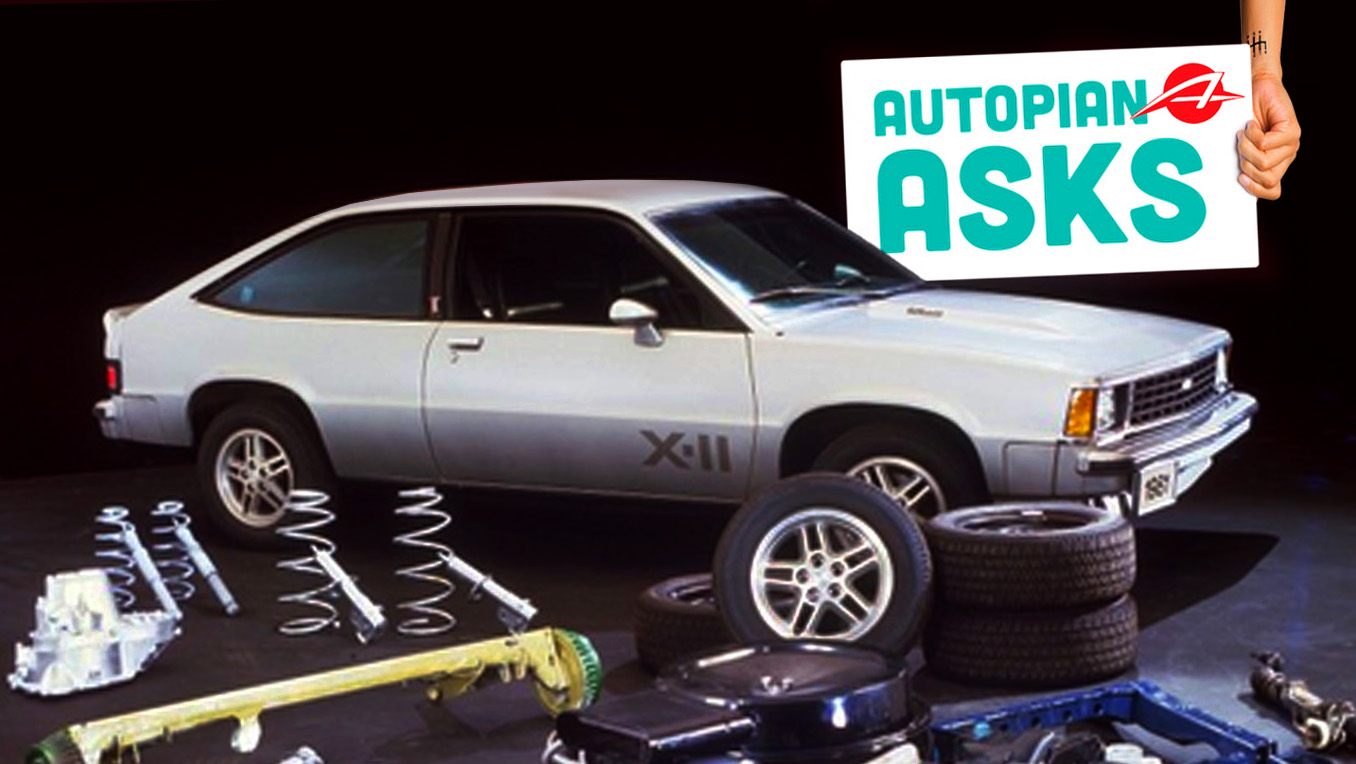There are many reasons why The Autopian doesn’t make those hackneyed “worst car” lists. First of all, they’ve been done to death, and second, we’re pro-car here. “Bad” cars from the Yugo to the Lexus SC430 all have their merits, and their makers tried, and they aren’t nearly as bad as those click-bait posts would have you believe.
That said, we readily admit that there have been cars over the years with more than their fair share of issues. However, certain versions of these notorious rides were a lot better than the run-of-the-mill examples. They usually had plenty of the same imperfections to be sure, but enough positives to possibly outweigh the negatives. And those are the cars we’re Autopian Asking about today.
Spacer
The new-for-1980 GM X-Body cars were revolutionary front-wheel-drive replacements for ancient compacts like the Chevy Nova, and it’s hard to think of a more dramatic one-year change in almost any car line ever produced. It could even tow a trailer with just THREE of its wheels!
Mercedes Streeter would get some twin-turbo, ten-liter F850 thing to tow that boat, but a Citation and three good tires is all anyone needs.
Sadly, in the typical fashion of GM at the time, many of the bugs were worked out by the first buyers instead of the engineering team, resulting in what was possibly the most recalled car in automotive history and a horrible reputation.

Chevy’s version of the X-Body was the Citation, and the initial X-11 “sporting” version wasn’t much more than a cosmetic package. Most people rightfully turned away, but in 1981 GM turned the X-11 into something far more formidable than a mere sticker set. The X-mobile’s suspension, tires, and V6 engine were all changed, tuned, and tweaked to make a spacious manual-transmission driver’s coupe that could get to sixty in a then-speedy 8.5 seconds and pull over .8g on the skidpad.

In size and spec, this thing compared favorably to the far more expensive Saab 900 Turbo, at least on paper or a smooth road. Need proof? In 1982 and 1984, the SCCA Showroom Stock Championship for the import-packed Class B was won by a 1981 Citation X-11.

If we fast-forward a couple of decades and swing by Chrysler HQ, we find the PT Cruiser is making its debut. Performance of the initial rental-car-spec models wasn’t thrilling and the PT Cruiser’s funky styling was lambasted mercilessly by the unimaginative, but buyers loved the retro look, and the Cruiser gained performance cred when the GT model hit the streets with 230 turbocharged horsepower and a five-speed manual.

While not earth-shattering, the GT’s zero-to-sixty time of under seven seconds and sport-tuned suspension made for a rather formidable and extremely unlikely “hot hatch.” So much for your “PT Loser” jokes, haters.

There are plenty more examples of cars that went from sad to solid, but I’m just going to stop here and leave it to you. What are some of the best versions of maligned cars can you think of?









The “weak” Aspen/Volare F-platform turned into the “tough” cop & taxi Dodge Diplomat/M-platform.
“In size and spec, this thing compared favorably to the far more expensive Saab 900 Turbo, at least on paper or a smooth road.” True, and I know the author is not suggesting they were comparable in real life. I have driven both. Love a SAAB 900. That’s all!
The humble Audi 80 spawned the original Quattro (Ur-Quattro).
My parents purchased a new 1981 Citation, and I took my driver’s test in it. Iron duke 4-spd, and the only options were bucket seats. The form factor of the car was really very good. Great interior space and flexibility. One reason my parents purchased the car was that the rear seats folded flat with the floor of the hatch area.
However, it was a truly terrible car. It started rusting within the first 18 months, which could pop up on any part of the car and would manifest as small pimples that grew quickly. These could be through-holes within 12 months. The plastics also turned to dust quickly, even in a northern state without much sun.
It had zero structural rigidity, steering & brakes that could have been out of a ’72 Nova, and build quality that didn’t exist.
I drove two X-11s in that era, and other than more power, they were the same car as my parents’ abomination. The suspension changes were basically sway bars and stiffer springs. The result of which just took the poorly built car to which they were attached and shook it apart more quickly.
The modern manifestation of the X-11 concept worked well in the Cobalt, which was mentioned elsewhere in the comments. But GM in the 80s had no chance of pulling it off.
Coincidentally, one year and one day ago one of the owners of this particular means of production pushed back against a book-length version of one of those lists.
I was impressed when I read about them as a child.
With the move to front wheel drive, the fourth generation Celica took that nameplate from being a fun sporty car to more of an economy car in athleisure wear. Quite a letdown… until the GT-Four model made it a legit rally contender.
Volvo wagon prepped for BTCC.
Since the Cobalt SS was already mentioned, I’m going to nominate my own car, the Veloster N.
The Veloster has always been a weird little “sporty” styling exercise that wrote checks its hardware couldn’t cash. The uninspired base engine existed to keep the entry price low, and the Turbo models, while better, couldn’t compete with the likes of the Golf GTI, the Fiesta ST, or Civic Si, which were far more developed and more rewarding to drive. Then with the 2nd generation Hyundai released the rowdy Veloster N, which from a performance and driving engagement standpoint felt like it might as well have been a completely different platform from the one it was based on. You were getting something that was nipping at a Civic Type R’s heels for Civic Si money. I honestly didn’t believe it until press reviews convinced me to test drive one.
Ford made 2 decades’ worth of Taurus/Sables with marginal or terrible transmissions. Unless you bought the Taurus SHO. Then you got a 5-speed manual that has a decent reputation. You also got a Yamaha-tuned Vulcan engine instead of the troublesome Essex engine that sent so many of these cars to the scrapyard.
It’s not often that the enthusiast edition of a car is more reliable than the base car, but the Taurus SHO is one of those cases.
The FWD Chrysler B-platform vehicles (Dodge Monaco, Eagle Premiere) were the basis for the Chrysler LH cars.
So that’s more of a case of going from ‘good’ to ‘better’.
Also the original K-Cars (Aires/Reliant) spawned better cars like the turbocharged versions of the FWD Dodge Daytona.
And the original Dodge Omni was crap. But then the Omni was given a fuel injected higher output version of the 2.2L 4 cyl and the 2.2L turbo and the Omni GLH and Omni GLH-S/GLH-T were born.
That’s not the way I remember them. They were the better of the first gen of US made “Eco-boxes” out there.
Heck, Car & Driver was very impressed by them as well.
https://www.caranddriver.com/reviews/a64914875/1978-dodge-omni-plymouth-horizon-archive-test/
I recall the very original ones with the 1.7L and 1.6L engines had poor ratings and not the best reliability. Part of the reason for that is Chrysler put their own carbs on those engines… and their carbs included the unreliable Lean Burn system.
The Omni/Horizon you wanted was one with the 2.2L engine.
Abarth 500. A base model 500 doesn’t even qualify as tepid, but the Abarth is hilariously fun to drive.
Owned a ’13 for 7 years and 77K miles, so much fun.
The mediocre Dodge D-series spawned a couple desirable variants:
Lil Red Express
Cummins powered models.
The mediocre AMC Concord wagon turned into the Eagle.
Seems like I just read here that the Fiero was developed by turning the Citation backwards and sticking an iron Duke in the back. (Was this from a Shitbox Showdown?)
Having one of the last year, ’87 or ’88, Fiero GTs is still a want for me. Especially if I could find one with T-tops.
I believe it was a Citation power unit in the back (to the point that some of the steering mechanisms are still there and just bolted into place) and Chevette front suspension, at least ’84-’87 (in typical GM fashion, there were pretty substantial updates for ’88 just to cancel it).
Plenty of Ferraris and Lamborghinis were spawned from a certain mid-engined Pontiac
Ford Sierra RS Cosworth. The base Sierra was a terrible car (I had one) but the Cosworth was rather good.
Buick Grand Nationals.
They are still G-bodies after all, and the G-body chassis can be good, but they were considered outdated when the G-body made its debut.
I will always want a GN/Regal T-type though…
The first gen Isuzu Impulse was built on a Chevy Chevette chassis. Damn near polar opposites in desirability.
As a former Impulse owner, loved that car, loved how it looked. Spaceship interior, RWD, 5spd manual. It wan’t really fast but a hoot to drive.
I’ve never been in one, much less driven one, but Giugiaro’s wedge design is just so damn gorgeous. Would love to find one of the later RS turbos, but it would probably be priced well beyond what I could spend on a hobby car.
Loved mine too. Great car for what it was.
You weren’t around back then to know this – but…
The X-11 package was incredibly rare – yet it was still a crap Citation.
Nobody cross shopped or confused these with a Saab 900 Turbo.
Nobody.
Because it was unmitigated crap – for all the same reasons every X car was crap.
However the X Cars were the basis for what came after – the A Cars: Chevy Celebrity, Pontiac 6000, Olds Cutlass Ciera and Buick Century. While they weren’t particularly exciting – they were relatively good reliable cars for their time.
And of those – the 6000STE was actually somewhat desirable.
Desirable enough to make C&D’s Top 10 list for several years in a row.
In that same timeframe – the F Body Dodge Aspen and Plymouth Volare were utter crap cars. Terrible build quality, cost cutting, rust, dangerous vapor lock…
But what came after on the same platform – the M-Bodies: Plymouth Gran Fury, Dodge Diplomat, Chrysler Fifth Avenue – were good, solid, reliable and durable cars.
Which is why they were so popular amongst police departments across the country despite being slower than a VW Rabbit GTi.
Ready for one more? OK!
1980 Box-Fox Ford Thunderbird/Mercury Cougar XR7 – What entirely preventable, embarrassing, overwrought pieces of crap! They only thing they had going for them was that they were among the very few cars of the time which could double the 55mph national speed limit. Eventually.
But what came after on the very same platform?
The 9th Gen aero Thunderbird/Cougar of 1983, particularly the Turbo Coupe and XR7 – especially after the facelift of 1987.
Well made, reliable, and even desirable.
And what was yet even more desirable on that same platform?
The Lincoln Mark VII LSC – which really was competitive with the Mercedes-Benz SEC and BMW 6 Series of the time for much less money.
The A cars were crap. My family owned a couple, I knew lots of people who owned one. They are terrible.
Pretty sure they were better than X cars – which had the following issues:
Inability to modulate rear brakes, causing cars to regularly spin out during emergency braking.
Excessive torque-steer despite low-powered engines.
Structural issues- including cracking frames where the steering box mounted.
Poorly engineered emissions controls and cooling systems.
Biodegradable interior plastics and body panels.
In typical GM fashion – most of these issues were ironed out by the end of production in time for the A bodies arrival.
Better than god awful doesn’t mean good. I took drivers ed in a Citation.
My girlfriend in high school had a X-11. It was a piece of crap. The only thing louder than the clattering, squeaking body was the clattering, squeaking POS Iron Duke up front. What a turd.
Cobalt SS (especially the LNF turbo ones), from the oh so pedestrian normal car. Fastest FWD on the Ring for years!
Good call.
Juke-R 2.0. Over 600hp on tap for a tiny little crossover. What’s not to love?
The X cars spawned the great A bodies (and more!), also the front suspension and 2.8 v6 went into the Feiro (which eventually did get good).
Came here to say this. The FWD A-bodies are darn near almost an American Volvo 240. Another nominee I’m thinking of is the Chrysler RWD M-body (Diplomat, Fifth Ave, etc.) which was almost the same but much better than the F-body (Volare, Aspen) it was derived from. Also in the Mopar family, the AA-body (Acclaim, Spirit) was evolved from and much better than the K.
What is this A-body nonsense? They are terrible. They all have problem with engine mounts breaking. They handle terribly. They have low power. They are the epitome of driving appliance, except worse because they aren’t reliable.
Like the J, they are cockroaches of the road.
Then how come I don’t see any on the road?
I live in an urban area with snobby tastes in cars, but I still see late Cieras and Centuries almost daily.
Any of the Shelby Dodge cars:
86 Omni GLHS
87 Charger GLHS
87 Shelby Lancer
87-89 Shadow CSX
And of course the 91 Dodge Spirit R/T
username checks out
Really any Turbo K-car or relative.
Looked at buying an ’89 Turbo LeBaron coupe in ’95 or so. Dad’s mechanic talked me out of it.
I’m tempted to add the 80’s Caravans with the Turbo and the 5-speed (4-speed?). But that may be a bridge too far.
And the it-probably-existed-but-also-possibly-not pickup bed Rampage!
https://www.theautopian.com/the-california-shelby-rampage-is-the-extremely-rare-dodge-street-pickup-you-never-knew-existed-holy-grails/
Well, how about the Cosworth Vega? It was quite forgettable without this package, and even today, the Cozzie has a following.
As a fairly agile handler with attractive styling and some innovative ideas, the base Vega wasn’t forgettable or, for economy cars, all that pedestrian. That term better described its buyers after a few months of ownership, and most of them would have loved to forget it if they could.
The 356 was directly spawned from the KDF-Wagen, which I think is more praise for the Beetle than anything, but I suspect I’d be in the minority, at least if I tried to set foot outside instead of browsing this site.
Good one!
Don’t know if this qualifies, but the AMX derived from the pedestrian Javelin gets my vote.